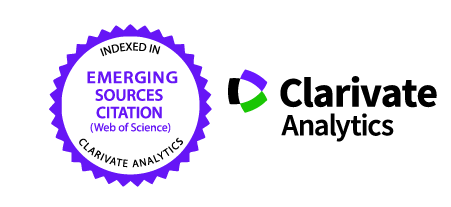Open Access
Peer Reviewed
ORIGINAL RESEARCH
71 Viewed54 Downloaded
Expression of Her2/Neu, MUC1, Estrogen, and Progesterone Receptors in Epithelial Ovarian Cancer: Implications for Targeted Therapy: A Descriptive Research
Received: 11 Mar 2025 | Received in revised form: 11 Jun 2025
Accepted: 18 Jul 2025 | Available online: 09 Sep 2025
JCOG.
DOI: 10.5336/jcog.2025-110315
Article Language: EN
Article Language: EN
Copyright Ⓒ 2025 by Türkiye Klinikleri. This is an open access article under the CC BY-NC-ND license (http://creativecommons.org/licenses/by-nc-nd/4.0/)
ABSTRACT
Objective: This study aimed to investigate the expression of HER2neu, MUC1, and estrogen and progesterone receptors in malignant epithelial ovarian cancer (EOC) and determine their effects on clinical-pathological features and prognosis. Material and Methods: The study included 86 patients diagnosed with EOC. The histopathological types were high-grade serous carcinoma (HGSC; n=46 patients), low-grade serous carcinoma (LGSC; n=7 patients), mucinous carcinoma (MC; n=14 patients), and clear cell carcinoma (CCC; n=19 patients). The patients' demographic, clinical-pathological, and prognostic characteristics were reviewed retrospectively. The pathological separates of the patients were immunohistochemically applied with MUC1, HER2neu, estrogen, and progesterone antibodies, and the expression status of these markers was analyzed for their relationship with clinical-pathological features and prognosis using statistical methods. Results: MUC1 was strongly positive in LGSC and CCC patients, with a lower frequency in MC and higher in HGSC (p<0.001). In 50% of MC cases, HER2neu staining was strongly positive. In addition, 85.7% of LGSC cases had positive estrogen receptor (ER) (p=0.041) and progesterone receptor (PR) (p=0.029). All 16 patients in the HGSC group, who were resistant to platinum therapy, tested positive for ER staining. Additionally, 93.7% of these patients were highly positive for MUC1 staining. Independent prognostic factors include: lymph node metastasis odds ratio [(OR)=3.5], lymphovascular invasion (LVI) (OR=21.296), advanced stage (OR=13.442), platinum resistance (OR=46.588), grade 3 (OR=10.750), ER positivity (OR=3.438), optimal cytoreduction (OR=17.280), and HGSC (OR=9.257). Conclusion: The study found that MUC1 was highly positively stained in the LGSC and CCC groups, platinum-resistant patients had high estrogen-PR expressions, and half of the MC group tested positive for HER2neu. These results are important for targeted therapy in difficult-to-manage EOC.
Objective: This study aimed to investigate the expression of HER2neu, MUC1, and estrogen and progesterone receptors in malignant epithelial ovarian cancer (EOC) and determine their effects on clinical-pathological features and prognosis. Material and Methods: The study included 86 patients diagnosed with EOC. The histopathological types were high-grade serous carcinoma (HGSC; n=46 patients), low-grade serous carcinoma (LGSC; n=7 patients), mucinous carcinoma (MC; n=14 patients), and clear cell carcinoma (CCC; n=19 patients). The patients' demographic, clinical-pathological, and prognostic characteristics were reviewed retrospectively. The pathological separates of the patients were immunohistochemically applied with MUC1, HER2neu, estrogen, and progesterone antibodies, and the expression status of these markers was analyzed for their relationship with clinical-pathological features and prognosis using statistical methods. Results: MUC1 was strongly positive in LGSC and CCC patients, with a lower frequency in MC and higher in HGSC (p<0.001). In 50% of MC cases, HER2neu staining was strongly positive. In addition, 85.7% of LGSC cases had positive estrogen receptor (ER) (p=0.041) and progesterone receptor (PR) (p=0.029). All 16 patients in the HGSC group, who were resistant to platinum therapy, tested positive for ER staining. Additionally, 93.7% of these patients were highly positive for MUC1 staining. Independent prognostic factors include: lymph node metastasis odds ratio [(OR)=3.5], lymphovascular invasion (LVI) (OR=21.296), advanced stage (OR=13.442), platinum resistance (OR=46.588), grade 3 (OR=10.750), ER positivity (OR=3.438), optimal cytoreduction (OR=17.280), and HGSC (OR=9.257). Conclusion: The study found that MUC1 was highly positively stained in the LGSC and CCC groups, platinum-resistant patients had high estrogen-PR expressions, and half of the MC group tested positive for HER2neu. These results are important for targeted therapy in difficult-to-manage EOC.
MENU
POPULAR ARTICLES
MOST DOWNLOADED ARTICLES





This journal is licensed under a Creative Commons Attribution-NonCommercial-NoDerivatives 4.0 International License.









